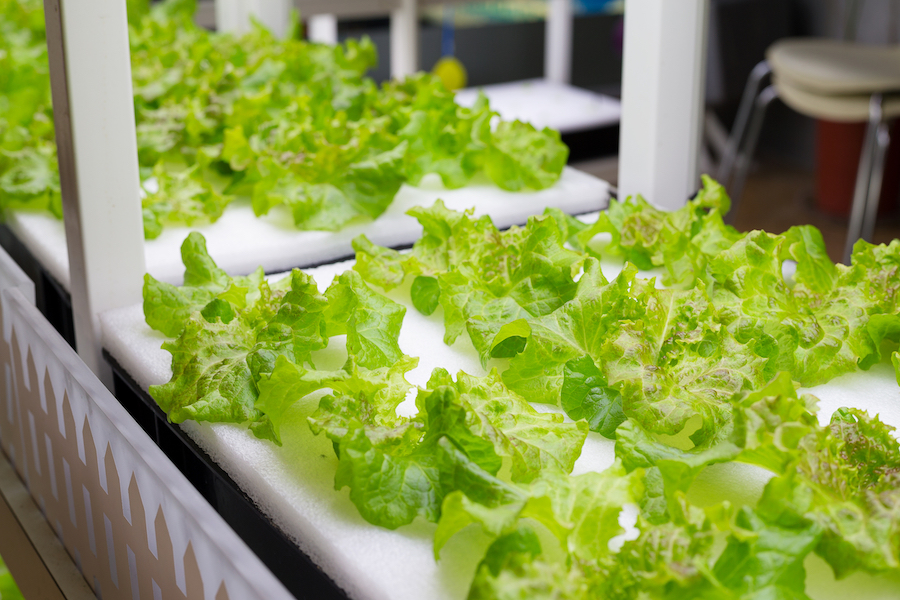Do you lack enough space in your backyard to grow fruits, veggies, and other plants? Or do you live in an apartment or share a garden? With aeroponic tower systems, you can be able to grow more plants with less space as well as indoors.
And what’s more? The aeroponic tower systems require less watering since they are closed-loop, meaning you’re simply recycling unutilized nutrient-enriched water. In addition to this, there are many other things you need to know, ranging from how plants grow to how aeroponic tower systems work. Read on to discover more.
What is Aeroponics?
Aeroponics involves growing plants in a mist or air atmosphere by spraying floating roots with hydroponic solutions. This farming technology doesn’t require soil or any aggregate media. The plant roots are suspended in an opaque or dark container and sprayed with a nutrient-dense fluid at predetermined intervals.
With this farming technology, plants receive nutrients extremely precisely, while roots get enough oxygen, making plants grow rapidly. In aeroponic systems, seeds are usually planted in small foam pieces stuffed into pots exposed to nutrient mist on one end and light on the other. Also, the foam holds the root and stem mass in place as your plants grow.
How Aeroponic Tower Systems Work
Aeroponic is hydroponic’s older subset. While both are soilless farming systems that depend on a nutrient water solution, an aeroponic tower system differs slightly. Seeds are germinated in a unique media known as rockwool. And once the seedlings have a few leaves, they’re moved to the aeroponic tower system.
The nutrient water solution is housed in a reservoir or drum at the tower’s bottom. Plants’ roots are sprayed with the nutrient water solution for fifteen minutes per hour. The solution is not contaminated since the aeroponic tower system is enclosed. Timer-controlled lights surround the aeroponic tower.
Basically, after the system is up and working, everything is controlled automatically until you’re ready to harvest. Experts say it takes between two to three weeks from seedlings to harvest.
Types of Aeroponic Systems
Aeroponic systems are categorized based on pressure. As a result, you’ll find low-pressure aeroponic systems and high-pressure aeroponic systems.
High-Pressure Aeroponic Systems
High-pressure aeroponic systems are ideal for commercial farming. Due to their setup, they’re more costly in terms of purchase and maintenance.
Most individuals describe these systems as the future of farming. Using a high-pressure aeroponic system is extremely technical, which’s why it’s only ideal for commercial farmers needing to grow and get more yields within a given period.
A general high-pressure aeroponic system pump ranges between 60 and 90 PSI. A more powerful pump produces a finer spray.
If you want a professional-grade high-pressure aeroponic system, you’ll need a pump providing a flow of 100 PSI. To expand the lifespan of a high-pressure aeroponic system, you need to look for a pressurized accumulator tank.
With this tank, you have two important things, the water solution, and pressurized air. These two components ensure that the pump doesn’t overwork and help maintain a steady PSI.
Low-Pressure Aeroponic Systems
If you’re a home grower, a low-pressure aeroponic system is a perfect match for you since it is cost-efficient. The system is also the most common in many places, not just limited to hydroponic specialist providers. Most individuals make their own low-pressure aeroponic systems using PVC pipes.
They simply attach misters to these pipes using a pond or fountain pump secured to a water reservoir. A low-pressure aeroponic system doesn’t require a special pump. It only needs enough pressure to create much-needed mist in the water reservoir.
Keep in mind that the head height is vital when picking a submersible pump for a low-pressure aeroponic system since the higher it’s, the more pressure is required to pump the water solution up until it gains access to the misters.
What Can You Grow with Aeroponics?
You can grow a wide range of plants using aeroponic tower systems, which include culinary herbs, leafy greens, cucumbers, tomatoes, strawberries, and marijuana.
Even root crops perform well with aeroponics since roots have a lot of room to grow and expand, and harvesting is also easier. Other types of vegetables are also possible, but they need extra nutrient requirements. Trees and fruiting shrubs are impractical in aeroponic tower systems.
Consider Gardyn Aeroponic Tower Systems
Gardyn is dedicated to changing the way people grow and enjoy food at home, starting from reducing the amount of work to getting more yields. The hydroponics technology used by Gardyn presents an excellent combination of aeroponic and hydroponic elements in a single conveniently-sized and self-sustaining design.
A Gardyn aeroponic tower system allows users to grow up to 30 large plants in a two square feet space while saving up to 95% water.

